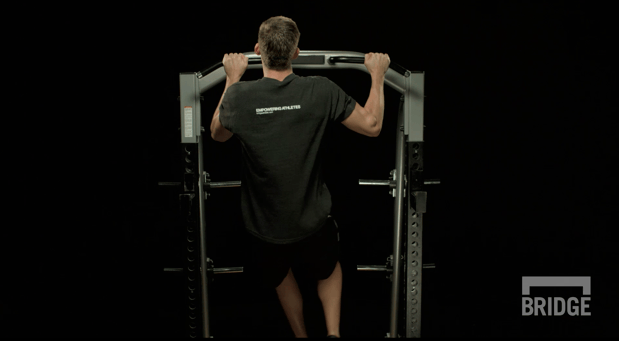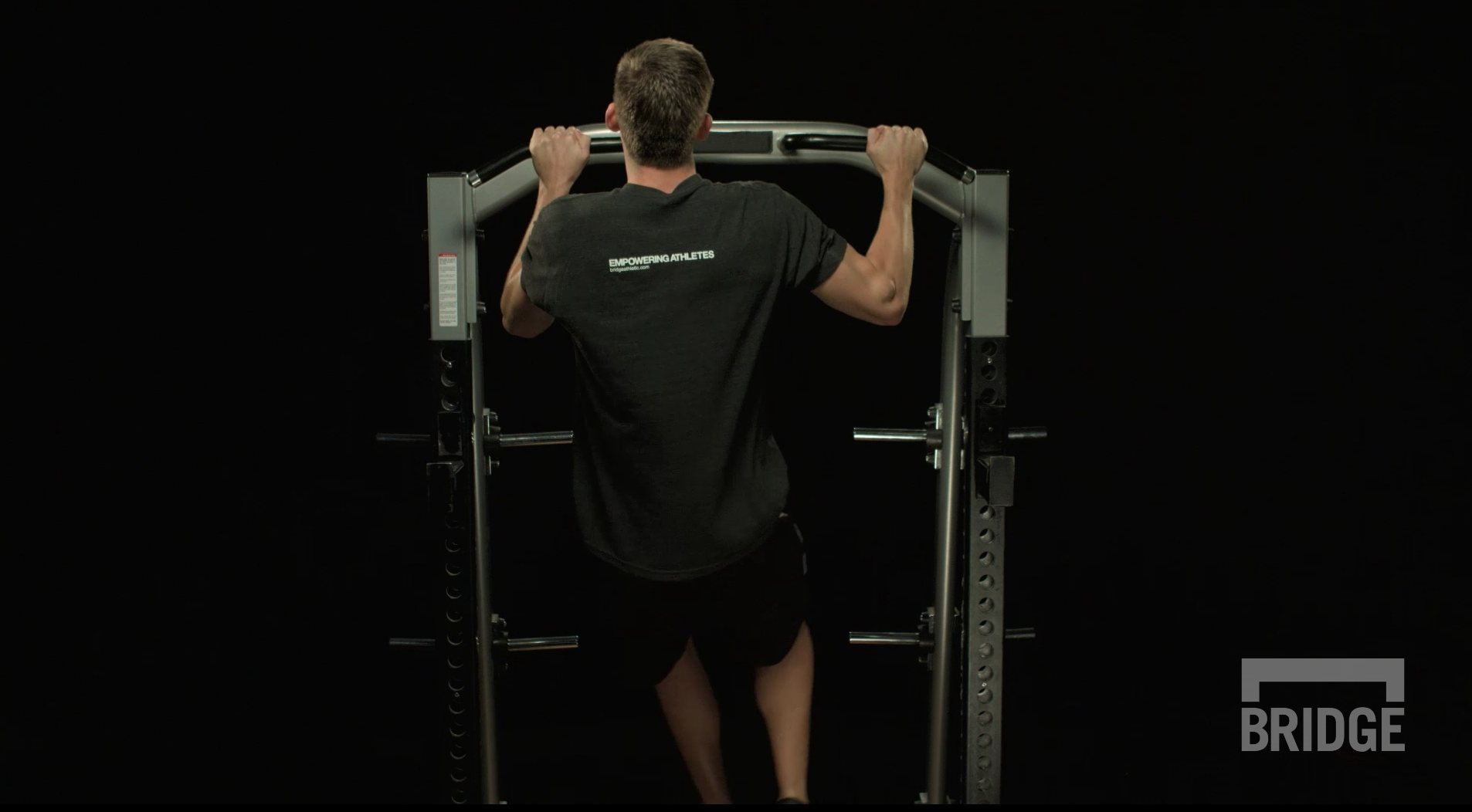Swim Dryland Building Blocks: 5 Exercises to Add Power to your Breaststroke

The BridgeAthletic Building Block Series is a set of 5 exercises that can be performed by swimmers of all levels on the pool deck.
Welcome to our series of swim building blocks. This edition will focus on breaststroke-specific exercises to fine-tune your body position and power in the water. Add these exercises to your power days in the pool and focus on them through the off-season to come back stronger and ready to push hard going into next season.
1. Lateral Squat
Breaststroke requires strong side-to-side movement. Specifically, a powerful breaststroke kick involves movement away from and toward the body midline. In dryland, this translates to exercises such as the lateral squat, where the swimmer transitions weight to one side, sits back into the hip and glute, and drives through the heel to push back up to starting position. The driving movement of the squat mirrors the propulsive close of the breaststroke kick where the feet slam together. An added perk of the lateral squat is that it increases strength and range of motion in the groin muscles, an area prone to injury in breaststrokers.
2. Slideboard Kneeling Lateral Pushup
The slideboard kneeling lateral pushup mimics the squeezing motion of breaststroke on the in-sweep. Because the upper body component of breaststroke is a complex movement in multiple planes, the dryland exercises meant to fine tune this stroke should also incorporate this complexity. A slideboard introduces instability into the exercise, and the lateral angle recreates the wide angle of breaststroke on the outsweep. Together, these elements force the athlete to recruit a similar combination of muscle groups as is required in the water.
3. Lateral Pullup
A lateral pullup develops 3 primary regions critical to your breaststroke:
- Upper back (lats and rhomboids)
- The wider your grip, the more you’ll work the back muscles that boost your pulldowns and power phase of your stroke. The more you can pull your bodyweight through this challenging exercise, the easier it will be to pull through water. The complex side-to-side movement at the top of the lateral pullup builds muscle while requiring your body to work several muscles simultaneously.
- Core
- Even though we emphasize arm and back strength with pullups, the core muscles play a large role. A strong core maintains the connection from fingertips to toes during the hip thrust and power lunge forward while swimming. It also maximizes the speed you carry during the glide by helping you maintain a more hydrodynamic line. Squeeze your core to reach the top of your pullup in the same way that you contract to pull your lower body forward in the first phase of the breaststroke kick.
- Forearms
- A lateral pullup demands more grip strength than a regular pullup because it requires more effort to hang at the top while performing the side-to-side lateral movement. Developing forearm strength that can translate to a stronger catch, this exercise will help you hook the corners of your stroke and hold onto more water throughout the catch.
4. Weight Vest Stepup
The weight vest step up is all about power through the glutes. It is another exercise that mimics the driving movement of snapping the feet together on the kick. A weight vest on this exercise emphasizes explosiveness more than the traditional step up.
5. Lateral Power Stepup
The lateral power step up is a hybrid of the lateral squat and a traditional step up. It fits within the same category of muscle recruitment for breaststroke kick, while adding diversity to the athlete’s dryland. With the lateral step up, the athlete develops greater proprioception than the lateral squat, while being forced to maintain the same range of motion.
About the Author

At Bridge, we are all athletes and coaches first. As athletes, our team has experienced everything from riding the pine on JV, to winning NCAA championships, to competing in the Olympic Games. As coaches, we have helped countless athletes reach their full potential, winning everything from age group section championships to Olympic Gold Medals.
Related Posts

The Best Bench Press Variation You’re...
This post is part of our Coaches Corner series with Taylor Rimmer. Taylor is NSCA-CPT, StrongFirst...

Does Powerlifting Harm Heart Health?
A recent study has discovered that a 12-week supervised strength training program (SSTP) may result...
-1.png)
Barefoot Running: Is It For You? |...
Run Free: Consider Less Cushion
Updated October 2020:
With more athletes looking for ways to...


